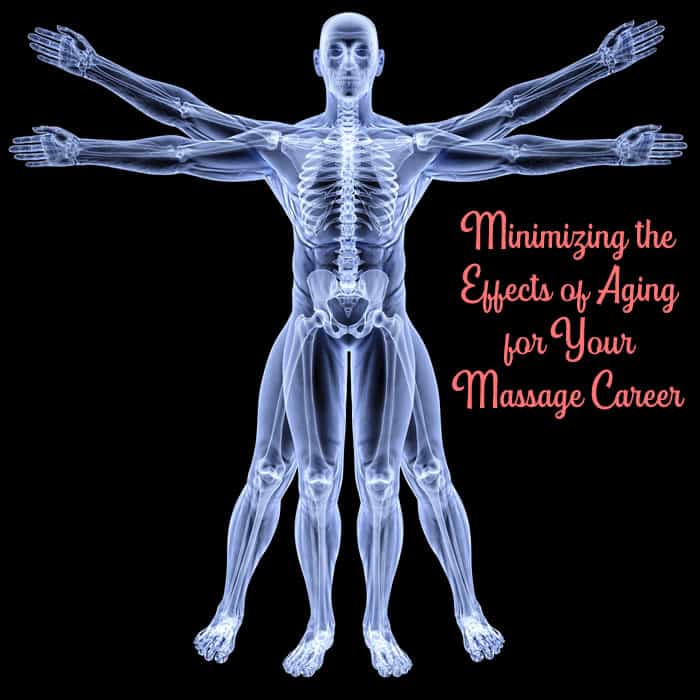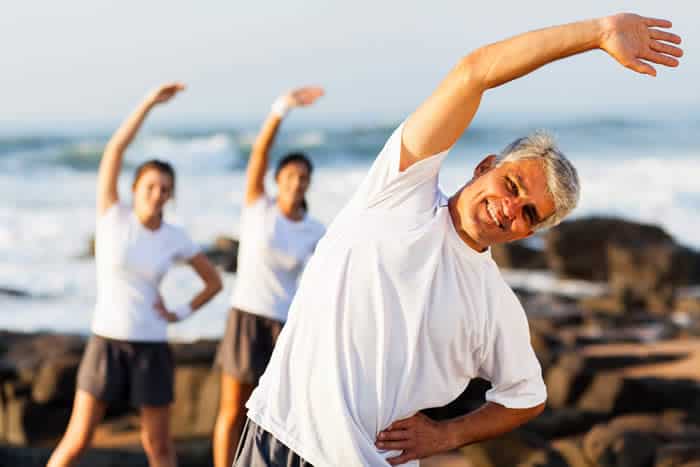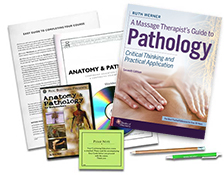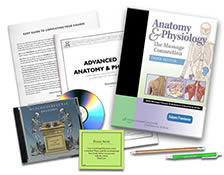

“You are only as old as you feel,” is a mantra I have often heard in the health and fitness fields. As I age as a licensed massage therapist, this statement comes to mind often.
I am inspired by therapists several years my elder who continue to serve as massage therapists. One of my life goals is to perform at least five massages a week when I am eighty years of age. With prudent self-care and conscious body awareness, I fully feel this goal is possible.
Changes in Anatomy & Physiology: Waning of Skeletal Tissue
As we age as massage therapists, there are changes in our anatomy and physiology of which to be aware. One example is the waning of skeletal tissue. As we age, bones lose bone mass progressively decade by decade. This leads to osteopenia (at least 10% bone mass loss) which progresses to osteoporosis (at least 33% bone mass loss). Intervertebral discs narrow causing one to lose height and spinal column integrity. (1)
A combination of massage therapy and strength training for the back can greatly aid to:
- slow any progression of waning tissues
- bolster tissue integrity
- and maintain bone health.
Massage therapy to relax tension from fatigued muscles may compliment a sufficient training to restore muscle strength.
Proper Nutrition
Proper nutrition to support bone health is vital to maintain as well. According to the organization, American Bone Health, the top six nutrients, verified with evidence, for bone health are:
- Calcium
- Phosphorus
- Magnesium
- Potassium
- Vitamin A
- Vitamin D
Consult a certified nutritionist for appropriate food options to obtain a healthy amount of each nutrient. (2)
Changes in Anatomy & Physiology: Tendons, Ligaments and Joints
Another example is the effects of aging within tendons, ligaments and joints. Decreased synovial fluid production within synovial joints will eventually lead to waning of articular cartilage. This sets the stage for the onset of osteoarthritis. Ligaments and tendons may lose elasticity thereby reducing flexibility and slowing one’s functional movement capabilities.
Keeping active is the top way to ensure joints, ligaments and tendons remain vital. Increased movement will increase synovial joint production. This will continue to bathe and nourish the articulating hyaline cartilage found at the ends of bones. Strength training to encourage weight-bearing loads upon joints will keep surrounding tendons and ligaments healthy.
One does not need to join a gym to accomplish strength training. Simply lifting cans of soup or small bags of rice at home can create enough weight-bearing force in an elderly body.
- Walking
- light jogging
- and intentional arm movements can also be enough to accomplish strength training goals.

Collagen Fibers
Increased production of collagen fibers can be stimulated at any age. This has been observed within the interstititum portions of fascia. Stem cells present in this fascial region dubbed CD34 positive lining cells have been observed to facilitate fibroblastic activity, thereby stimulating collagen production. (3)
Incorporating Myofascial Release, stretching and range of motion (either passive or active) into one’s massage and bodywork treatments will be effective at activating these CD34 cells.
Changes in Anatomy & Physiology: Sarcopenia
A third example of the effects of aging is the waning of muscle tissue (sarcopenia). Declines in muscle tonicity diminish strength. Accompanying neurological changes can contribute to irregular gait, loss of proprioceptive coordination and ability to apply strength and leverage.
As a massage therapist, the ability to deliver pressure involves the full body. Ensure any workout routine to strengthen the body involves more than one’s arms and shoulders.
Keeping your core and legs strong will contribute more to your career than simply maintaining upper limb strength. A good reminder from entry level massage training is that deeper pressure application stems from utilizing full body weight, moving from one’s core and legs, to apply pressure upon a client’s body.
Maintaining Core and Leg Strength

Good exercise suggestions to maintain core and leg strength will be including Pilates, Tai Chi, Qi Gong, and yoga, as all these activities can focus intention toward the body’s core and lower limb muscles.
Additionally, swimming can keep muscles strong due to extra assistance of the resistance of water.
A well-trained personal trainer at a fitness gym can devise a workout regiment designed to strengthen any and all muscle regions. Seek a personal trainer if one is unsure of which exercises to incorporate at a gym.
An occupational therapist can be a great professional to assist with teaching one how to perform everyday tasks with greater ease, strength training specific body regions, and modifying one’s ergonomics for improved functional capacity.
Changes in Anatomy & Physiology: Health of Organ Systems
Other examples of the effects of aging may involve health of organ systems.
- Endocrine hormones wane over time. Andropause and menopause (with associated prefixes “peri” and “pre”) are the terms used to describe hormonal declines. These declines can create challenges in aforementioned tissues and affect our general energy levels.
- The risk of cardiovascular disease rises as we age due to a myriad of lifestyle choices causing plaques to form in arteries, increased blood pressure, and vascular conditions.
- Respiratory conditions may exacerbate as lung health declines, especially due to the effects of smoking.
- Urinary and reproductive health may suffer as pelvic floor disorders may onset. (4)
Lifestyle Choices
Discuss lifestyle choices with certified professionals:
- A certified nutritionist may offer professional counsel for one’s dietary needs.
- An endocrinologist or naturopathic doctor may discuss options to harmonize hormonal changes within one’s body.
- A respiratory therapist may assist with improving respiratory health related to a health condition. A yoga instructor may assist with improved breathing before a serious condition onsets.
- A specialized physical therapist trained in pelvic floor disorders may offer guidance on proper exercises and augmenting treatments to correct pelvic floor disorders.
Practicing Massage Well Into Your 70s and Beyond
I personally know several massage therapists who are still practicing massage on a full-time basis well into their 7th decade of life. I plan on being amongst these therapists someday.













